The Power of Metering: How to Choose the Right Batteries for Water Meters
1. Introduction
Automated Meter Reading (AMR) and Advanced Metering Infrastructure (AMI) technologies are gaining momentum in the water utility market, with almost half of all water meters in North America now equipped with AMR/AMI devices.
AMR/AMI technology has been available since the mid-1980s. However, the pace of industry-wide adoption has fast-tracked in recent years because of several factors including improved product functionality, extended battery life, and greater affordability because of increasing price competition among major AMR/AMI equipment manufacturers.
The majority of water meters used in AMI/AMR systems are powered by lithium thionyl chloride (LiSOCL2) batteries. Although there are several different lithium chemistries, LiSOCL2 batteries offer the highest specific energy (energy per unit weight) and energy density (energy per unit volume) of all existing battery chemistries.
In this whitepaper, we will discuss some key considerations that you should keep in mind when seeking a battery for your water metering system. We will also discuss how Aricell’s size D LiSOCL2 batteries are the right option if you’re looking for a long-lasting solution.

2. Cell Technology for Water Meters: Why LiSOCL2 Cells and Batteries Are Ideal
LiSOCL2 cells and battery technology has been in development for over 30-plus years and over the years cell manufacturers have worked extensively to fine tune this technology. Improvement efforts on passivation, internal impedance and extremely low self-discharge rates has allowed a battery life of up to 20 years. Moreover, they benefit from a very flat discharge profile over time so that the terminal voltage stays relatively constant over their entire service life.
This is a more expensive battery technology compared to other lithium chemistries and is used in applications demanding extremely long battery life, such as water and gas meters and industrial and military electronic applications.
3. Factors to Consider When Choosing a Water Meter Battery
Water meter manufacturers want the batteries to last in the field for 20-plus years, which cuts the cost of replacing batteries and helps improve their profitability. This is why meter manufacturers put in extensive time in qualifying cells and batteries for battery performance, reliability, and service life.
When choosing a battery to integrate into your water meter, you have to make many considerations to ensure the device can operate effectively. Some of these include:
With batteries, you can store and transport energy easily. However, during storage, some of that stored energy may escape from the battery through a process called self-discharge. While it is not possible to completely avoid self-discharge, it’s best to choose a battery that has the least possible self-discharge rate.
For instance, depending on the cell manufacturer, the self-discharge rate of LiSOCL2 batteries is less than 1% per year at 20℃, which can support long storage periods and achieve a service life of 10 to 20 years. This makes them suitable for long-term applications, such as automated meter reading, medical devices, and security wireless devices, and more.
The next factor you should consider is the construction of the battery. There are two types of LiSOCL2 battery constructions that you can choose from: Spirally Wound or Bobbin.
- Spirally Wound– Due to a wound cathode, it has a reduced energy density and shorter operating life (because extra surface area results in a higher self-discharge rate).
- Bobbin – It offers an extended temperature range, high capacity, small size, and an ability to withstand broad fluctuations in pressure, temperature, and shock. This makes bobbin-type LiSOCL2 cells ideal for use in remote locations and extreme environments.
Bobbin-type LiSOCL2 cells are mostly well suited for low-current applications because of their high energy density, very low self-discharge rate, and high operating life.
Figure 1: Spirally Wound vs. Bobbin type construction

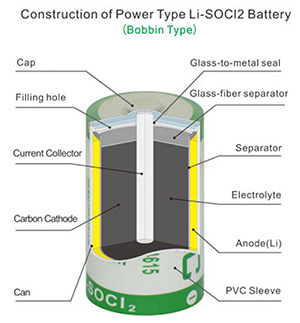
Several dynamic physical parameters also affect the performance of a battery. For instance, variations in temperature, output impedance, duty cycle, and energy delivery affect battery loading conditions and, eventually, shape the battery selection process. Bear in mind that some of these effects are of the first order and must be given appropriate consideration.
Many systems also have high dynamic bandwidth with respect to power demand. For example, AMR water meters often have dormant power consumption in the order of micro-Watts and an active peak consumption of Watts.
4. Aricell Size D Primary Lithium Batteries for Water Metering
Made in South Korea, Aricell’s low rate series is a suitable solution for applications requiring a small current for long-term back-ups, such as water metering. These cells have a superior shelf life (up to 15 years) and a low self-discharge rate (less than 1% per year at 20℃).
Some notable Aricell size D batteries include:
TCL-D Aricell Primary Lithium Cell
TCL-D Aricell Primary Lithium Cell is a 3.6V LiSOCL2 battery with a size D Bobbin structure and 304L stainless steel container.
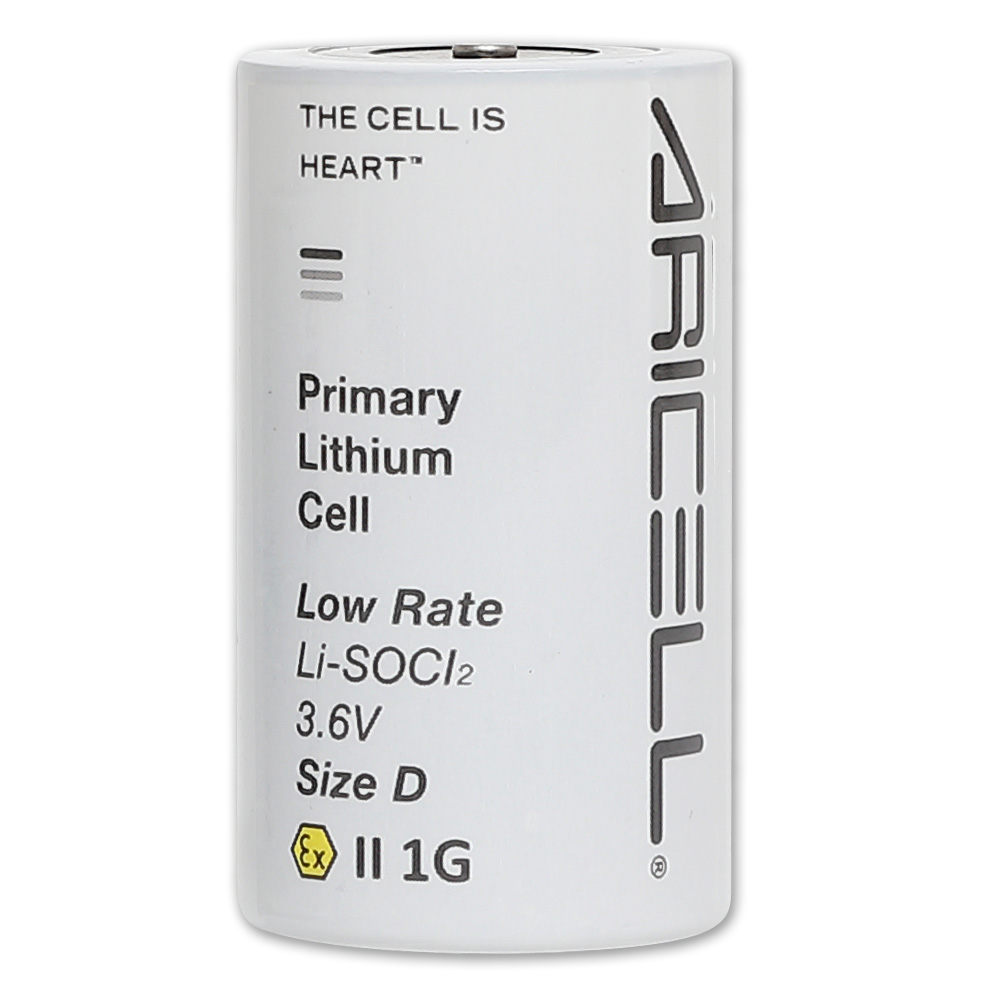
Key features include:
- Superior shelf life (up to 15 years)
- Wide operational temperature range (-55oC / +85oC)
- Hermetically glass to metal sealed
- Non-flammable electrolyte
- Compliant with IEC60086-4
- UN DOT 38.3
You can read more about battery specifications in this PDF datasheet.


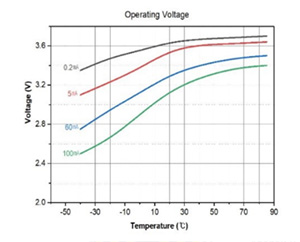
Figure 2. Performance of TCL-D Aricell Primary Lithium Cell
SCL-D Aricell Primary Lithium Cell
Also part of the low rate series, SCL-D Aricell Primary Lithium Cell is a 3.9V lithium sulfuryl chloride (LiSO2CL2) cell with a Bobbin structure (size D) and 304L stainless steel container.
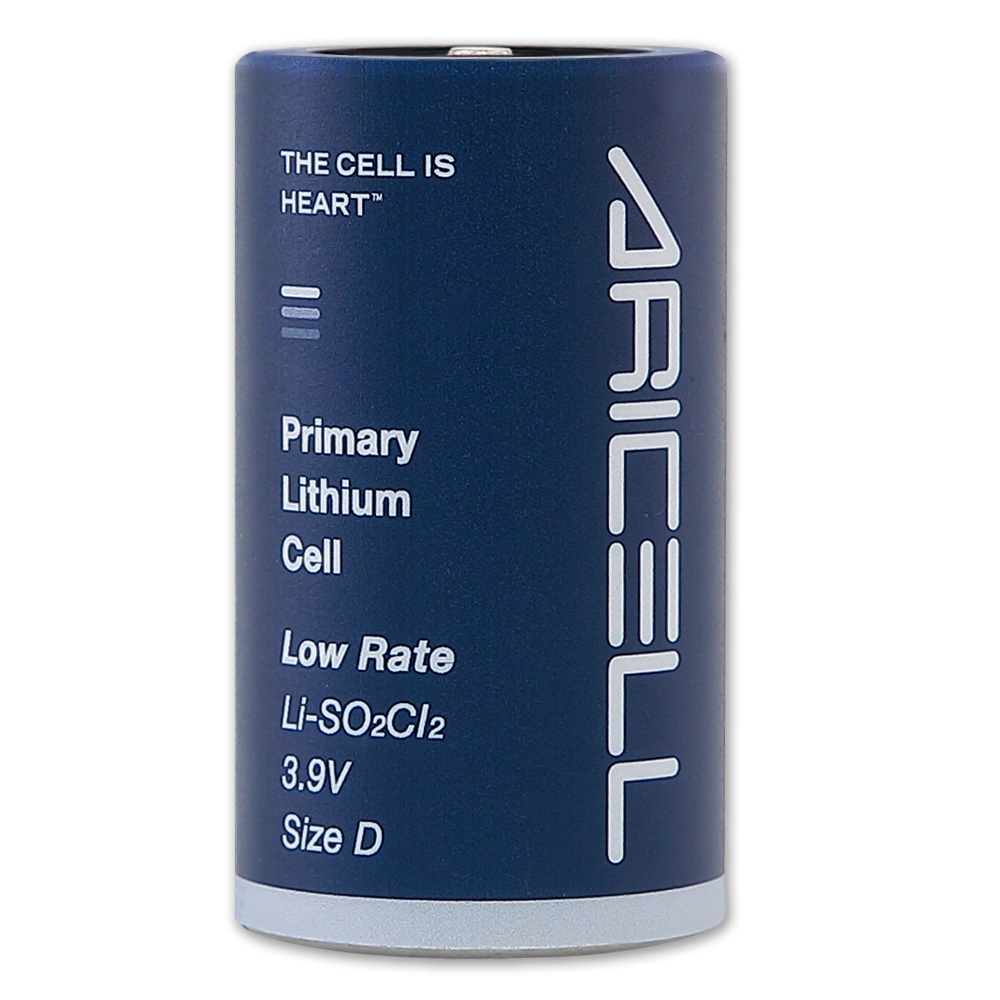
Key features include:
- High and stable operating voltage
- Wide operational temperature range (-40℃ / +85℃)
- Hermetically glass to metal sealed
- Non-flammable electrolyte
- Compliant with IEC60086-4
- UN DOT 38
You can read more about battery specifications in this PDF datasheet.
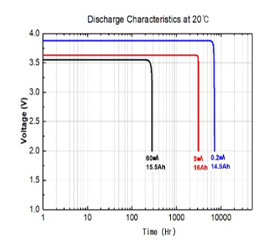
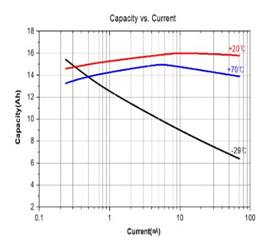
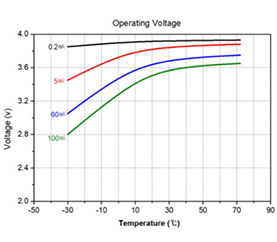
Figure 3. Performance of SCL-D Aricell Primary Lithium Cell
5. Conclusion
When choosing a battery for your water meter, you need to consider several factors. Apart from those listed above, you may also want to consider battery discharge profiles that can vary greatly depending on the battery chemistry and the power demand profile (both peak load and duty cycle).
Keep in mind that several environmental considerations (especially temperature) can also affect battery performance. System-level considerations, such as battery replacement intervals and system voltage requirements, may also influence the battery selection process. In addition, there can be several other environmental considerations, such as recycling, toxic materials, heavy metals, safety, and shipping regulations.
About the Author

Sanjay Hegde, National Sales Manager for Emerging Power, has been in the battery industry for over 15 years managing $150M plus in sales within the USA and international markets. He has extensive experience in both primary and secondary cell chemistry and has a good understanding of the primary cell chemistry used in Metering, Sensors, RFID and IOT, Medical and Military markets.
You can reach out to Sanjay via email: sanjay@emergingpower.com or phone: (828) 391-4805.

